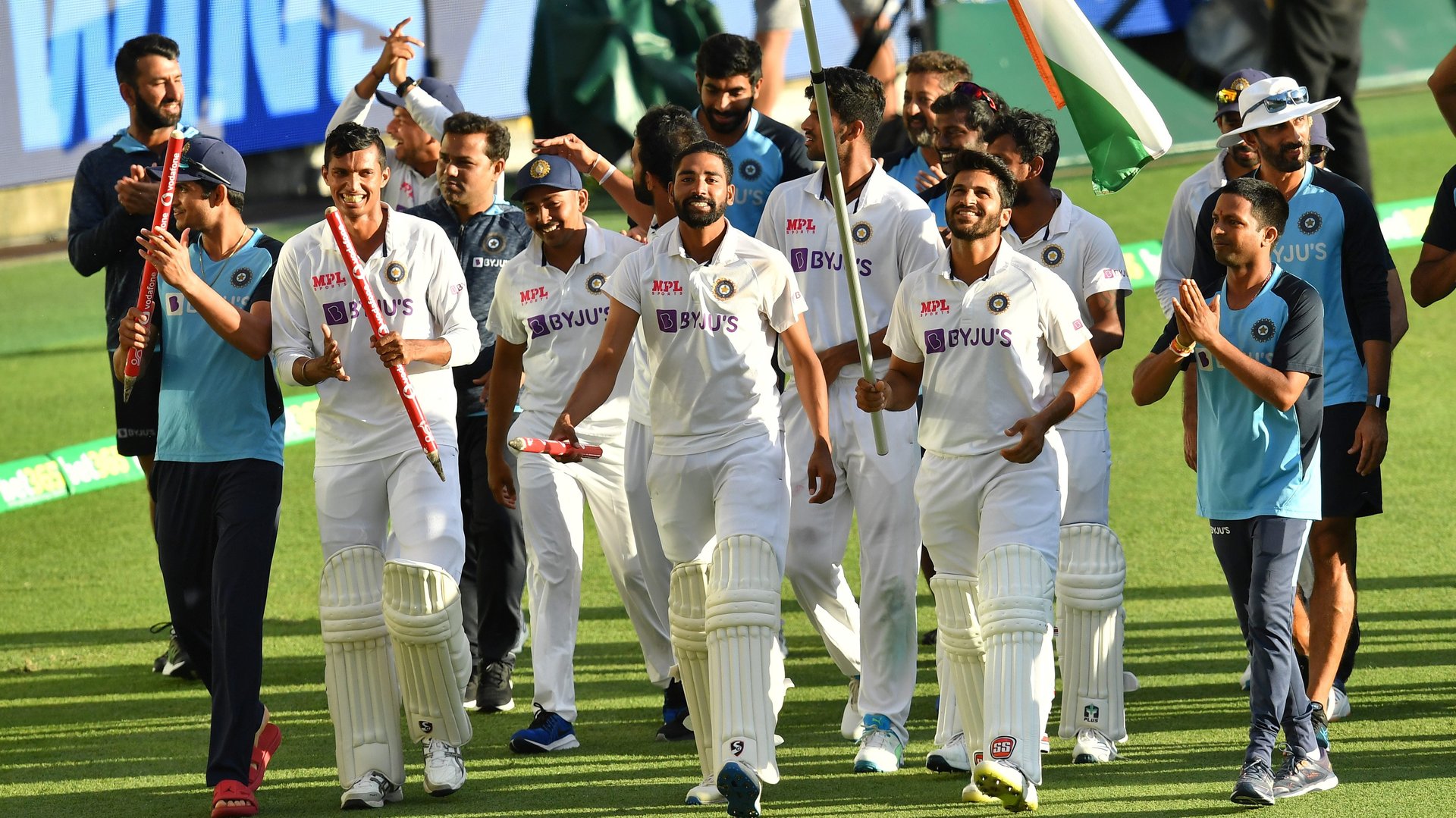Why Indian cricket is competitive when its economy is not
On Tuesday, the Indian cricket team registered an astonishing result in Australia, not just by winning a game and a series in notoriously hostile conditions overseas but by doing so with what was essentially a second-string side.


On Tuesday, the Indian cricket team registered an astonishing result in Australia, not just by winning a game and a series in notoriously hostile conditions overseas but by doing so with what was essentially a second-string side.
A full-strength squad shed players one by one through the course of a long tour that began late in December. The captain and India’s best batsman, Virat Kohli, came home for the birth of his first child. Seven others suffered injuries: a fractured arm, a torn hamstring, a seized-up back, an injured calf, and more. They were replaced, in several cases, by young cricketers who’d never played Test cricket—the arduous, five-day version of the game—till now.
And yet India won. More crucial still was the manner of its victory: its new players self-assured against some of world cricket’s most ferocious bowlers, and cool-headed during excruciating phases of play.
It’s always tempting to see successful sporting teams as metaphors for the nations and economies that produced them, and in the details, such comparisons don’t always hold up. Tending to the welfare of millions of citizens is very different from coaching talented athletes to hit, kick, or throw a ball. But on occasion, teams still meaningfully refract some of the qualities their countries possess—or, indeed, some of the qualities their countries lack.
A comparison between China and India—two massive economies with a vast pool of potential sporting stars—is instructive. China’s sporting triumphs reflect the way China does everything, including the administration of its economy. It methodically curates and nurtures competitive sporting academies the way it does competitive companies, and both athletes and businessmen rise and fall at the sufferance of the state. India is the antipode. Its perennially poor performance at the Olympics is a marker of the state’s larger political dysfunction—of cronyism, corruption and mismanagement that trip up not just aspiring athletes but aspiring businesses as well.
But Indian cricket bucks this model. The team is a world-beater. And although the Indian cricketing system is riddled with many of the flaws that also plague the Indian state, it has managed to create a mostly competitive marketplace in a way that the state hasn’t managed with its economy.
The Indian Premier League (IPL) is a good example. The annual tournament played between city franchises, first hosted in 2008 and consisting of short, sharp games, has come with a typically Indian share of corruption and conflicts of interest. Its critics call it crass and superficial.
But the IPL offers young Indian players from even modest backgrounds the chance to compete on merit with each other and with visiting international stars. It exposes them to high-pressure cricket, so that those who do well develop both the skills and the self-belief to step up to even more intense contests—of the kind they encountered in Australia. Indian cricket has found ways to be authentically competitive. So far, the Indian economy has not.